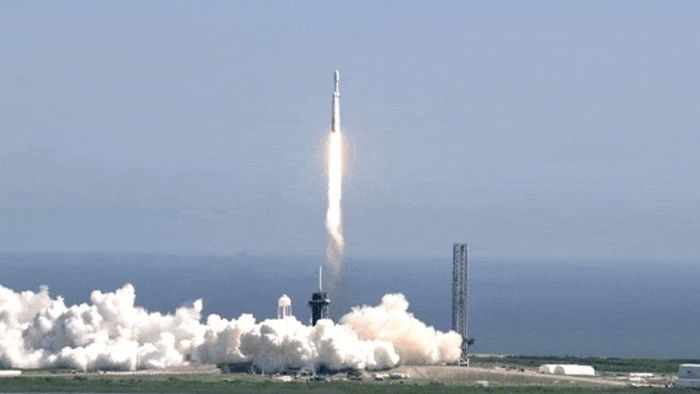NASA's historic mission to study life on Jupiter's moon takes off, spacecraft to reach in 2030
NASA's $5 billion Europa Clipper mission embarks on a journey to Jupiter's moon Europa to explore life-supporting conditions. The spacecraft will conduct 49 flybys to gather vital data on the moon's ice and ocean.

- Oct 14, 2024,
- Updated Oct 14, 2024, 10:29 PM IST
NASA's historic mission to study conditions suitable for life on Jupiter's watery moon took off as the Europa Clipper spacecraft was launched from Kennedy Space Center in Florida.
The $5 billion mission aims to explore Europa, one of Jupiter's moons, to investigate whether it could harbour conditions suitable for life.
Europa has long been a subject of fascination with its vast subsurface ocean. Nasa’s largest ever built spacecraft for a planetary mission, will travel 2.9 billion kilometers over the course of six years, arriving at Europa in 2030.
Upon arrival, Europa Clipper will conduct 49 close flybys of the icy moon and gather crucial data on Europa's ice shell and the ocean hidden beneath.
It is armed with nine sophisticated scientific instruments, including cameras, spectrometers, and radar.
A key focus of the mission is determining the thickness of Europa’s ice crust and investigating the possibility of water pockets within it.
The spacecraft will also study the moon’s atmosphere and search for evidence of water plumes erupting from its surface, which could be critical clues in search for life.
Europa Clipper’s design takes into account the intense radiation environment around Jupiter. To safeguard its electronics, the spacecraft is equipped with a radiation-shielded aluminium vault.
Its innovative orbit around Jupiter will allow it to make repeated passes of Europa while minimising exposure to harmful radiation.
The data collected during this mission has the potential to revolutionise our understanding of habitable worlds beyond Earth.